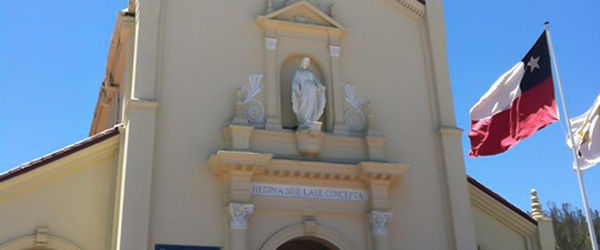Taste, as St. Augustine said some 1,700 years ago, is subjective. That should be acknowledged upfront whenever someone recommends a reading list.
In my case, I need to state too that I’m not a full-time critic. It’s not like I’ve read 200 books this past year and these rose to the top. I read when I can, follow book reviews, am fortunate enough to live with academic colleagues who tip each other off on good books, and I have friends who will occasionally tell me that a certain book “has to be read.” From out of that, comes this list. These are the books that most touched me this past year:
Among books on spirituality, I single out these:
“The Taste of Silence,” Bieke Vandekerckhove. They say that the book you need to read finds you at the time you most need to read it. That was the case here. Vandekerckhove is a young Belgian writer who, 20 years ago, was diagnosed with amyothrophic lateral sclerosis, Lou Gehrig’s disease. Her normal life ended with that sentence and, after an initial descent into darkness, she found strength by making an inner journey into the deep silence that resides inside us all. Her description of her journey is remarkable.
“Beyond the Abortion Wars: A Way Forward for a New Generation,” Charles Camosy. This is an important book that will healthily shake-up both pro-life and pro-choice readers by showing that, not only are we closer to each other than we thought, but there is a way, together, to walk out of the present political, social, religious, and legal stalemate within which we find ourselves.
“The Reluctant Disciple: Daring to Believe,” David Wells. Wells, a young British layman, offers us a warm, witty, and exquisitely balanced insight into how spirituality and life interface in today’s world for a person caught up in the ordinary duties and concerns of life. Among other things, it’s a spirituality for those who don’t like the word spirituality.
“Mercy in the City,” Kerry Weber. Weber, a young writer on the editorial staff at America Magazine, chronicles her own journey through a Lenten season. This is a warm read, very good book, with deceptive depth.
“A Religion of One’s Own: A Guide to Creating a Personal Spirituality in a Secular World,” Thomas Moore. This book will upset a lot of people for its rather existential concept of community and ecclesiology, but Moore writes, as always, with a freshness, insight, and depth that brings a healthy challenge to everyone.
“The World Beyond Your Head: On Becoming an Individual in an Age of Distraction,” Matthew B. Crawford. Not a spirituality book in se, but this book delivers on its title. If you can wade through the philosophical parts, which are taxing, Crawford gives you a lot, really a lot, to think about.
In terms of novels, I particularly liked these:
“The Children Act,” Ian McEwan. A major, world-class novelist, McEwan gives us here a warm, easy-to-read story that packs a deeper metaphor.
“The Anchoress,” Robyn Cadwallader. Did you ever wonder how people like Julian of Norwich lived? What really was an anchoress? Cadwallader gives us a fictional picture of what someone like Julian of Norwich would have lived out.
“Purity,” Jonathan Franzen. It takes 600 pages for this story to sort itself out. But it’s vintage Franzen. He tells a good story
“Lying Awake,” Mark Salzman. The story of a young Carmelite nun who has to discern illness from mysticism. This book is 15 years old, but well worth the read.
“The Painter of Silence,” Georgina Harding. Set in Romania just after World War II, Harding sets humanity and soul into the tragedy of war and into human brokenness in general. A great read, along the lines of “All the Light We Cannot See.”
Finally, a special category: Each year I write a column on suicide. I don’t claim any special insight into that singular sadness that surrounds a suicide, both in society at large and in church circles. I write on this issue simply because there’s just too little out there to help anyone understand and cope with the loss of a loved one through suicide.
During the past year, I received three separate books, all written by a mother who had lost a child to suicide. The stories, while stunningly unique in that each person is his or her own mystery, bear an eerie resemblance to each other, not because they are each written by a mother trying to come to grips with a tragic loss of her own child, but that in each case a grieving mother is describing a very similar kind of person, namely, a beautiful, over-sensitive young person who, in effect, is too-bruised to cope with ordinary life. All three of these books are worth the read and, read together, will scar your heart:
“Healing the Wound of my Daughter’s Suicide,” Lois Severson.
“Damage Done: Suicide of an Only Son,” Gloria Hutchinson.
“My Daughter, Her Suicide and God,” Marjorie Antus.
Oblate of Mary Immaculate Father Ronald Rolheiser is a specialist in the field of spirituality and systematic theology. His website is www.ronrolheiser.com.

